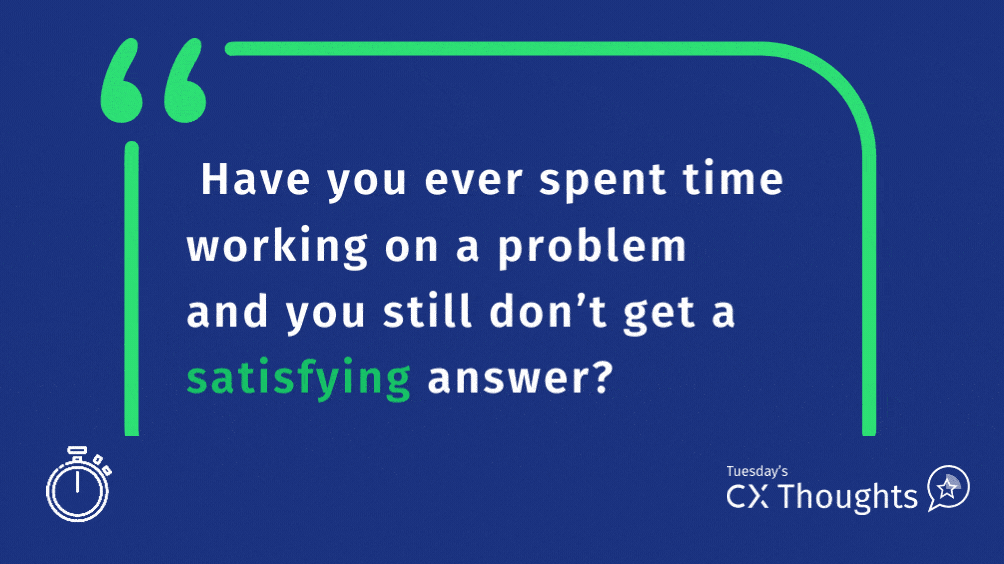 Reading Time: 3 minutes read
Reading Time: 3 minutes readIf your goal is to create a great customer experience, you need to integrate and optimize every interaction a customer might have with your brand. Thus, what any customer experience strategy should seek is to create unique moments with the consumer, making them experience positive emotions throughout the customer journey. This is why having a well-set CX program with the right tools and insights is crucial.
The two mistakes you’ll make when building a CX program
Transforming the experience of your consumers with your CX program sometimes can get tricky. In today’s CX Thoughts I’ll share two customer experience program mistakes that you and your team could potentially bump into and how to work around them.
Time Spent Problem Solving
Have you ever spent time working on a problem and you still don’t get a satisfying answer? Some might say you haven’t spent enough time on it. Others might say you’ve been working on it too long and you need to step away for a fresh perspective.
The same is true for your customer experience program – you’re spending too much time on it, yet you are not spending enough time on it. These are two problems you have unless you have an NPS score of 100. Too often we focus on one thing to the detriment of another.
Example #1: Don’t lose track of your actual CX goals
When developing your customer experience strategy, you’re revolving it around a CX enterprise software platform that has been predetermined.
This will put you in the position of spending time trying to fit the proverbial “square peg into a round hole”, which will end up with your focus on implementation instead of solving for the customer pain.
Example #2: Are you spending enough time recognizing systemic issues?
Another example would be committing an abundance of operational resources to manage the customer feedback loop, but then not spending enough time to understand the root cause of those customer experience missteps at a strategic level.
It is a core reason behind our introduction of NPS+, you can still react to the individual customer issues, but have a mechanism to solve issues at a higher level so these same customer concerns can be avoided in the future. It is also why we have re-imagined closed-loop feedback and taken a deeper look at the inner loop and outer loop workflows to help companies recognize the best places to spend their time on systemic issues.
You can read more about that in one of my previous CX thoughts “Shifting C-Xpectations”, where I also describe why the one core element in customer experience strategy is building a strong relationship with customers.
Too Much Time… Yet Not Enough
While we will continue to make this mistake, it is important to recognize some of the fundamental reasons we do this. At our jobs, we all have internal and external pressures that influence our time and attention. Sometimes, we’ll let one of these interfere with one of the most important decisions as we strive to build our customer connections: the tools that we use.
We developed QuestionPro CX management platform to provide a good combination of available features that you need – without some of the flashy tools that will not support your needs very well. We’ve built them so they are flexible in usage – a tool that can be self-service so you can quickly make a change but also provide support in all areas of the platform and business.
A closed-loop feedback system that is simplified, but with all the mechanisms you would need to imbed that information into your internal system. A place where you can manage market research, employee experience, full-featured customer communities, and customer experience all in one place – or just one of those tools that meet your specific needs – and the time that you have to work with it.
QuestionPro offers a robust online platform to help you manage customer experience. Schedule a live demo with our CX professionals and learn how our CX software can help you increase brand loyalty and keep customers coming back.
Leverage a powerful CX program







